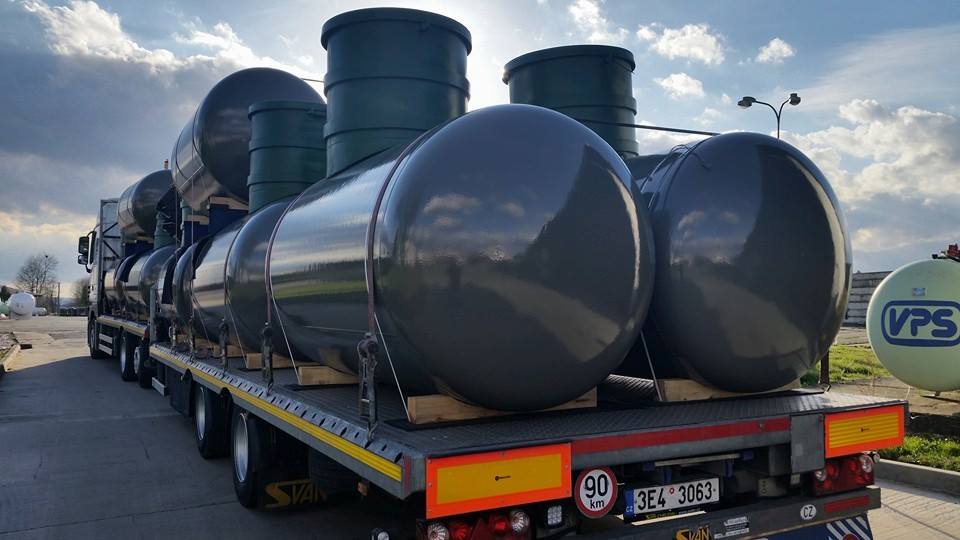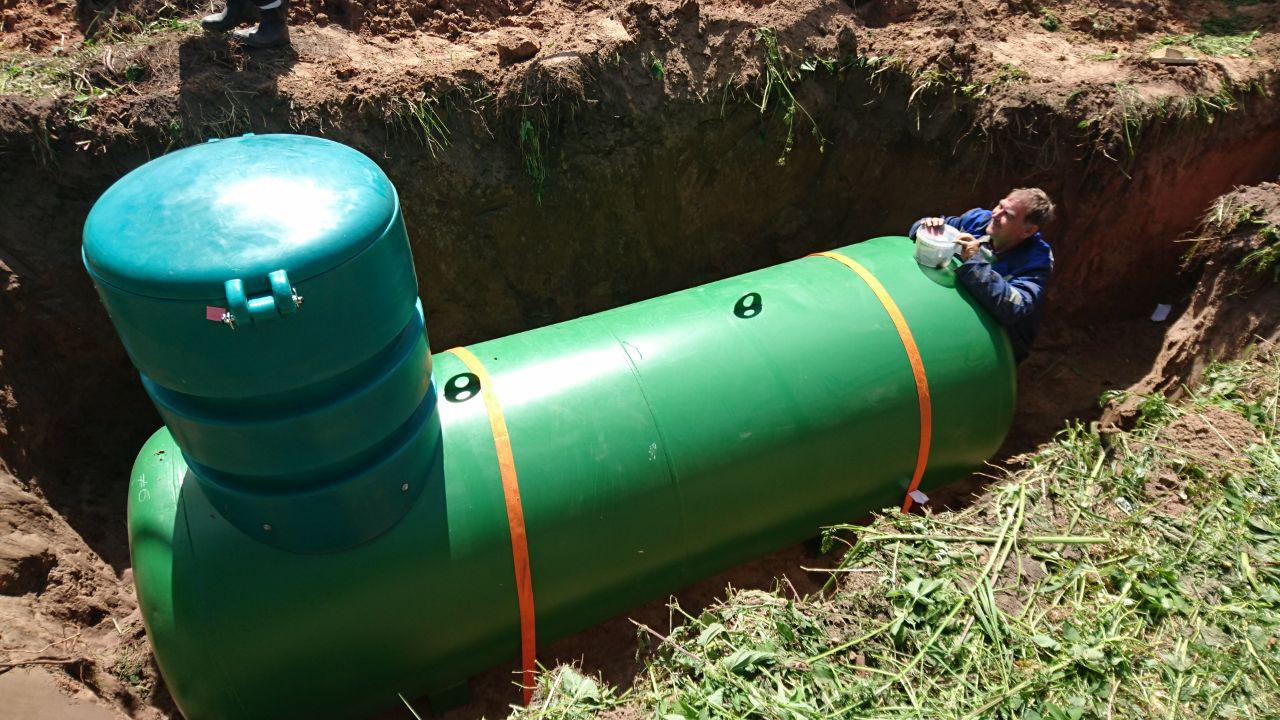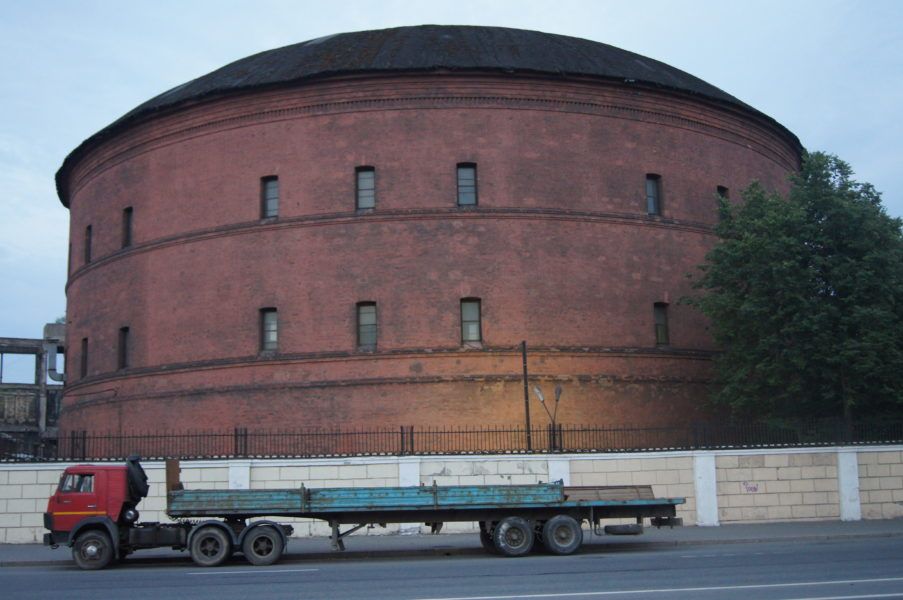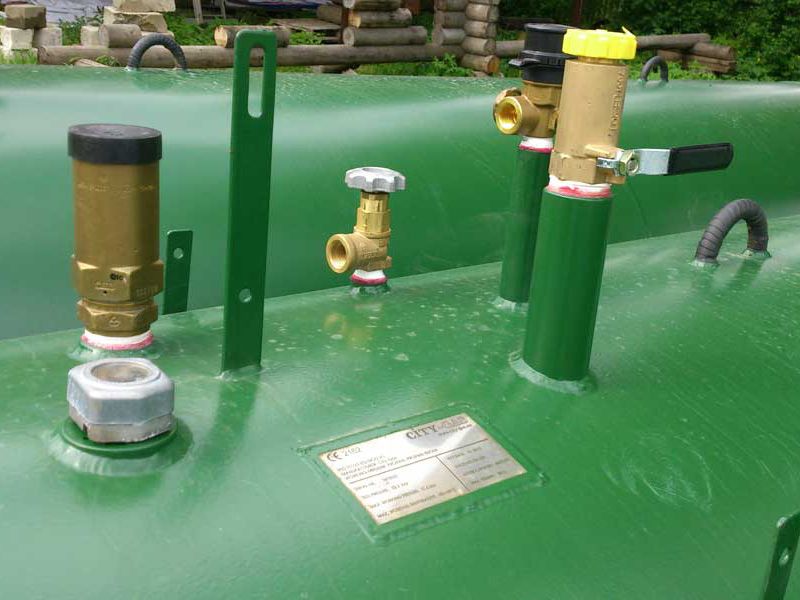Rating of the best gas tanks in 2024

Sooner or later, every resident of the private sector thinks about the gasification of his home. Gas supply allows you to cook food on the stove, heat the house in winter and at other times of the year in damp weather. You can also install a gas water heater or a boiler for heating water in order to wash your face and wash dishes with hot water. The best option is to connect to the main gas pipeline. Today this is an expensive service that is not available to everyone. The highway is being laid in large developed cities and in places where it is technically possible to lay pipes.
Autonomous connection is the second option, thanks to which additional and necessary amenities will appear in the house. By connecting privately, the owner of the house and the plot monitors the storage, use and purchase of gas. The question arises, how to properly store fuel and in what? For these purposes, gas tanks are suitable - special tanks that can be installed on a personal plot.
Gas holder - what is it

A gas holder is a storage facility for gaseous substances: air, natural and oil gas, butane, propane, etc. The tank can be compared to a conventional gas cylinder, only large in volume. The gasholder is installed once. The service life is 20 - 25 years with constant refueling. The owner calls a special filling machine that fills the container with gas.
A bit of history
The first rectangular structure for gas storage with a volume of 100 liters was invented by Lavoisier in 1781. Over the years of modernization, the first cylindrical tank was built. In industry, special tanks and buildings for storing gaseous substances were used in the 19th century, since 1816. They could not be located next to residential buildings. The structure was loaded with gaseous hydrocarbon fuel, which was stored under high pressure, which was unsafe. The pressure was constantly regulated in wet gasholders by means of a pool of water and a bell, or by means of counterweights. By the middle of the 19th century, it became necessary to illuminate the streets with gas lanterns: they appeared in St. Petersburg in 1835, in Moscow in 1865.

The largest gas tank was built in America in 1888. Its capacity was 424.8 thousand cubic meters.
Over time, dry gas tanks with variable pressure appeared: a piston moved inside a cylindrical structure, depending on the amount of gas in it. The structures have not passed safety tests. They were abandoned almost immediately.
Modern materials have made gas tanks safe for private use.The containers maintain a constant volume and withstand increased pressure, up to 18 atmospheres. By placing them underground, it is possible to keep the temperature of the walls above zero. In such cases, it is not necessary to install special evaporation vessels. The gas evaporates at a low rate. This property is used to supply gas to private cottages and houses. Excessive pressure must be relieved to prevent destruction of the housing walls. For this, the gas tank is equipped with a special valve.

When the gas tank is better than the main
Reasons for installing an autonomous gas tank:
- low pressure and poor gas supply in the main pipe;
- lack of a gas pipeline in the settlement (village, village, city);
- high price for connection to the central highway.
Why gas fuel
Gas is stored in tanks in a liquefied state. Such fuel is much more efficient than conventional wood, coal and diesel fuel.
Gas advantages:
- the cost of gas is lower than the price of diesel fuel;
- during use, cleanliness is observed, without dust and dirt, which gives coal;
- the use of gas is more cost-effective and cheaper than the use of electric heaters;
- gas is stored in special containers at a certain temperature, unlike firewood, which requires a complex loading and storage scheme in a warm, dry room.
Classification of gas tanks
Gas tanks are divided according to several criteria: size (capacity), storage principle, installation method.
Capacity and a number of ensuing consequences

Large (up to 10,000 l) and small (2,000 l) gas containers are produced in size. The size depends on the number of refueling and refueling: with a small tank, the refueller will have to be called more often. The optimal number of gas stations is 2 times a year. The cost of the structure and installation for its installation also depends on the size: the larger the container, the more expensive the land works will cost, and the more space will be needed on the site.
How to calculate the amount of gas and choose a container for storing it
Before purchasing, you should decide how much gas you need to use. It depends on the:
- ambient temperatures and seasons;
- on the thickness of the walls of the house and the quality of insulation;
- on the efficiency and efficiency of the boiler used;
- on the quality of the fuel itself.
To calculate the annual fuel consumption in liters, you need to carry out a whole series of mathematical calculations. Manufacturers simplify the calculation to the following scheme: the approximate consumption of gas volume per square meter of the room is 22 - 25 liters. According to their recommendation, a large house with an area of 300 or more square meters will need a gas tank for 10,000 liters. For heating a small room (up to 100 square meters), a tank with a volume of 2,700 liters is enough.
Fuel storage principle
There are gasholders of constant and variable volume. At a constant volume, gas is stored at a pressure of up to 1.8 MPa. With a variable tank volume, the gas is stored internally at ambient temperature and atmospheric pressure with little or no compression.
Installation methods

Vertical, horizontal and mobile tanks are sold according to the installation principle.
Vertical models do not require serious excavation - they can be installed on the surface. These models are compact, take up little space and have a small working area. Tanks must have an insulating winding that will maintain the required rate of gas evaporation during the cold period. Heating installations can also be used to speed up the process.
In horizontal containers, the mixture goes into gas more efficiently. The working surface has a large area, the tanks are filled to 85% of the nominal value. The main thing is to choose the desired size of the product.
The third type is mobile, mobile gas tanks of small capacity (up to 500 liters). Economy is considered a plus - they can be refueled at stations with a reduced price for liquefied gas. They do not require installation and installation underground. The disadvantage of mobile devices is that the refueling must be constant.

Rating of the best models of 2024
The Russian climate is considered harsh. The difference in seasonal temperatures should not affect the purchased products. The tanks should have thick walls (6 to 10 mm) and a high neck (from 40 cm). The container will last a long time if the surface of the case is covered with a protective layer: anti-corrosion material and epoxy resin, which will soften shocks and save from temperature extremes. You can purchase a polymer-coated gas tank - its cost is high, but the boiler tightness will remain for many years, which will justify the costs. There are also electrochemical coatings that provide additional wall protection.
For the safe use of the gas mixture, factory-made gas tanks should be purchased. High-quality equipment must have a certificate and a guarantee from the manufacturer, performance characteristics and technical requirements in accordance with state standards, Russian or international.

When fittings and safety devices are included in the delivery, they are also covered by the warranty. Once every 10 years, suppliers of warranty equipment are required to check the condition of the seams, remove contamination and conduct a technological inspection of the condition of the tank.
Russia or import?
There are not many factories in Russia specializing in the production of fuel storage facilities. Foreign competitors have conquered most of the market. Several years ago, imported gas tanks could be purchased cheaper than our models. By 2024, new mini-enterprises have appeared that have raised the quality of gas equipment to the level of world standards, while reducing the cost price.
Comparing models of Russian and foreign manufacturers, a number of features and differences in technical characteristics and technological components can be noted:
- Imported models are made with an improved anti-corrosion coating, but their walls are thinner than those of domestic tanks;
- Passport data of foreign containers differ from those of Russian devices, and are not designed for low temperatures;
- Refueling of our models is easier, their design does not create problems during use;
- Foreign manufacturers can produce unique tanks that can be served by certain organizations. In this case, both the supply of spare parts and the supply of the mixture can be accompanied by difficulties;
- Our tanks are more robust and require additional protection using anode-cathode circuits.
A common property for all manufacturing countries: each product must have a certificate of quality and safety in accordance with applicable standards, rules and regulations for use.
Consider gas tanks from popular manufacturers and make up the TOP-5.
Dages

The German company DAGES Gastechnik-Anlagen opens the rating. The company's production facilities are located in the Czech Republic. Russia has been cooperating with the Germans for over a decade. Dages manufactures gas equipment for industry, private homes and mobile systems. Products for above-ground and underground installations are made of high-quality steel, coated on top with the latest generation of polymer epoxy resin. At the stage of putting the product into operation, a complete check of quality characteristics is carried out. The manufacturer claims a 30-year warranty period. The capacity of business-class gas tanks is designed for 2700 ... 10000 liters. The following modifications of DAGES Gaztechnik-Anlagen can be purchased in Russia: Rosstandart-1, Eurostandard-1, Eurostandard-2. All three types are suitable for the conditions of the Russian climate. The first modification of the storage facility can be installed in a place where groundwater is located high: the height of the nozzles is half a meter.
The purchase of a 2700 liter gas tank will cost 260,000 rubles; for 10,000 liters - 465,000 rubles.
- high quality;
- sufficient height of the nozzles to protect against melt and groundwater.
- thin plastic on the pipes;
- high price of the product with a similar design of the Russian counterpart;
- little information on the sites.
VPS

The Czech manufacturer has been supplying gas equipment to the Russian market since 2006. Honorary 4th place. High-tech production makes it possible to obtain tanks of excellent quality for storing butane and propane above and below ground. VPS also produces liquefied gas tankers. There are three types of tanks for private gasification, similar to the previous version: Eurostandard-1 and 2, Rosstandart-1. The company uses normalized anti-corrosion steel that has been vacuum degassed. Outside, ILAEPOX epoxy film with a thickness of more than 1 mm is applied.
All the requirements of DIN 4681 are met during the manufacture. The wall reliability and the absence of cracks on them is achieved by relieving residual stresses during heat treatment. Weld seams and metal are checked by ultrasonic flaw detection. If you purchase a VPS tank for a summer residence, a cottage, you can be sure that you have a passport in Russian, GOST certificates and permission from Rostekhnadzor. The manufacturer claims the operating temperature limit is from -40 to +40 degrees with a neck height of 80 cm, the life of the product is 20 or more years. If all installation rules are followed, the service life can increase up to 50 years. The tanks are completed with the German GOK fittings.
The cost of a gas tank with a neck and a manhole in the form of a hatch with a volume of 2,700 liters is 299,000 rubles, with a volume of 10,000 liters - 488,000 rubles.
- advanced technologies make it possible to obtain high-quality tanks;
- excellent expensive protective coating;
- there is an option for installation in the place of groundwater;
- reliable company;
- all the requirements of the standards are met.
- high cost of products.
FAS

Gas holders of the Russian-German joint venture FasChemMash (FHM) are distinguished by their quality and reliability and occupy the 3rd place. Products for underground and aboveground installations of gas storage equipment are subject to strict control at the enterprise. The tanks are considered the best-selling on the market in Russia and Germany. Versions are produced in vertical and horizontal versions, the volume of containers is 4.6 - 20 thousand liters. Unlike Czech tanks (which have only 2 pipes with devices lifted), FAS products have all 5 pipes lifted. The devices installed in them are reliably protected from ground and melt water, and are in the field of visibility.
For the manufacture of tanks, steel 09G2S is used, the sheets are 6.6 mm thick. The walls of the tank and the bottom are made of them. The main supplier of metal, Severstal, is known on the Russian market for the supply of high-quality rolled metal of various brands. After welding, the unit undergoes lead shot blasting. This is followed by a Permacor epoxy coating that protects against corrosion and moisture. The inner walls of the tank are not painted. The fittings are supplied by the American company Rego. True, an economy option is provided: flanges and valves must be tightened periodically.
Cost of FAS storages on the market: 257,000 - 850,000 rubles, depending on the volume.
- value for money;
- the design allows you to keep all devices clean in the field of view;
- products are time-tested.
- inexpensive external coating with medium anti-corrosion properties;
- economy is used - a variant of American fittings, which periodically fails;
- does not withstand severe frosts - you have to restart the system.
City-Gas

Bulgarian gas tanks, which are in second place, are actively supplied and operated in the Middle East: in Saudi Arabia, Iran, Turkey, Iraq, etc. Russia has recently learned about them. Distributor GAZ REGION INVEST brought the first City-Gas storage facilities for propane-butane to the country. Branded products are made from imported S355J263 steel, which has undergone normalization and vacuum degassing. The top of the body metal is treated with an anti-corrosion polymer that reliably protects the container from temperature extremes and moisture.Each container is hydro-tested during the manufacturing process, after which the product is preserved with a 10-year warranty and can be stored in open and closed premises.
City-Gas produces a seven-size range with the smallest volume of 2700 liters, the average volume of 10,000 liters and the largest volume of 50,000 liters. For a small area of the territory, vertical models of 2700 and 4850 liters are produced. Depending on the location of the site, it is possible to purchase and install tanks with a high neck, low neck and high nozzles. A protective polyethylene casing is installed on the outside of each tank. It has been recommended to use Bulgarian reservoirs for 30 years.

The cost of a small City-Gas gas tank is 190,000 rubles, an average one for 10,000 liters - 400,000 rubles.
- great quality;
- there is a possibility of purchasing vertical models;
- large volumetric range;
- good equipment;
- models are protected from aggressive environment by a polyethylene casing;
- products can be used in various climatic zones, from the tropics to the polar ones.
- not detected.
Bear

Among the available and reliable Russian-made tanks, one can mention the products of Medved LLC. The company produces gas tanks of the following types: land-based stationary; underground horizontal; underground vertical; mobile. One of two options can be ordered on the market: Eurostandard – 2 and Rosstandart – 1. Gas tanks are made in accordance with the requirements of the GOST R 52630-2006 standard. The plant has its own laboratory, where the incoming rolled products are controlled and the final acceptance of the product quality is carried out.
Medved tanks are made in accordance with GOST 8713-79: from high-strength metal 09G2S with a thickness of 5 mm and more. The metal is not cold-brittle, ductile, has excellent corrosion resistance, is resistant to cracking, is not prone to aging, and is easily purchased on the market. The bottoms are made not by stamping, but by cold rolling. Using this technology, you can get any shape of a high-precision workpiece with an ideal shape.

All welded seams of the tank blanks undergo thorough ultrasonic inspection for defects. Before painting, the containers are cleaned with a strong pressure of shot (shot blasting). This eliminates the unevenness of the application of any coating: shockproof, anti-corrosion, decorative paint and varnish. The product is suitable for use in high groundwater environments. INTERZONE two-component epoxy coating provides excellent protection of steel structures in wet ground. The Medved tanks are equipped with Italian mini-components and shut-off units from CAVAGNA. The company's products are successfully sold in 145 countries of the world.
CAVAGNA gearboxes are reliable, efficient and safe. The tank has a polyethylene casing. The rigidity of its structure is provided by ribs. The casing is closed from above with a sturdy cover. It is safe to step on the cover: it can easily support the weight of an adult and is equipped with protection against accidental opening. When the equipment is supplied, the container itself, fittings, cover, carpet are purchased. The product can be used for three and a half decades. When installed on a turnkey basis, the tank can withstand up to 1000 fillings and last up to 50 years. Leader of the top five in 2024.
On average, the cost of a Medved gas tank with a capacity of 3,000 liters for gasification of a small house with an area of up to 100 square meters will cost 160,000 rubles, a tank of 10,500 liters for a large house with an area of 250-500 square meters - 290,000 rubles.
- high-strength product;
- two-component epoxy coating of the body allows the tank to be used in an area with high groundwater;
- 35-year guarantee according to the passport;
- minimum wall thickness 5 mm, bottom 6 mm;
- the product has passed certification;
- the height of the nozzles is 650 mm;
- affordable price;
- there is a possibility of ordering projects at the request of the customer.
- only one - the delivery set does not include a reduction group, it must be purchased at a separate cost.
The characteristics and prices of gas tanks are shown in the table:
| A place | Name | Production | Volume, l | Thickness, mm | Length, m | Pressure, atm | Weight, kg | Price, thousand rubles |
|---|---|---|---|---|---|---|---|---|
| 5 | Dages | Germany (Czech Republic) | 2700-10000 | not specified | 2,5-8,6 | 15.6 | 580-1790 | 260-465 |
| 4 | VPS | Czech Republic | 2700-10000 | 5.4 and more | 2,5-8,6 | 15.6 | 580-1790 | 299-488 |
| 3 | FAS | Russia-Germany | 4600-20000 | 6.6 and more | 4,35-12,57 | 15.6 | 830-2100 | 257-850 |
| 2 | City-Gas | Bulgaria | 2700-10000 | 5.4 and more | 2,5-8,6 | 15.6 | 580-1790 | 189-400 |
| 1 | Bear | Russia | 3000-10500 | 5 and more | 2,95-9,85 | 16 | 590-2100 | 160-290 |
Output

A gas tank installed on a personal plot does not need to be registered. It is enough to purchase a factory version with a passport and certification compliance. The safety and durability of the storage facility will depend on the correct installation.
new entries
Categories
Useful
Popular articles
-

Top rating of the best and inexpensive scooters up to 50 cubic meters in 2024
Views: 97661 -

Rating of the best materials for noise insulation for an apartment in 2024
Views: 95022 -

Rating of cheap analogues of expensive medicines for flu and colds for 2024
Views: 91751 -

The best men's running shoes in 2024
Views: 87681 -

Top ranking of the best smartwatches 2024 - price-quality
Views: 85091 -

Best Complex Vitamins in 2024
Views: 84801 -

The best dye for gray hair - 2024 top ranking
Views: 82406 -

Rating of the best wood paints for interior use in 2024
Views: 77202 -

Ranking of the best action cameras from China in 2024
Views: 75269 -

Rating of the best spinning reels in 2024
Views: 74827 -

The most effective calcium supplements for adults and children in 2024
Views: 72462 -

Top rating of the best means for male potency in 2024 with a description
Views: 68296









